|
|
 |
|
090505 Basilicas and A Potluck |
|
written
by pev42 / 09.07.2005 |
|
|
| |
Itinerary |
| |
| |
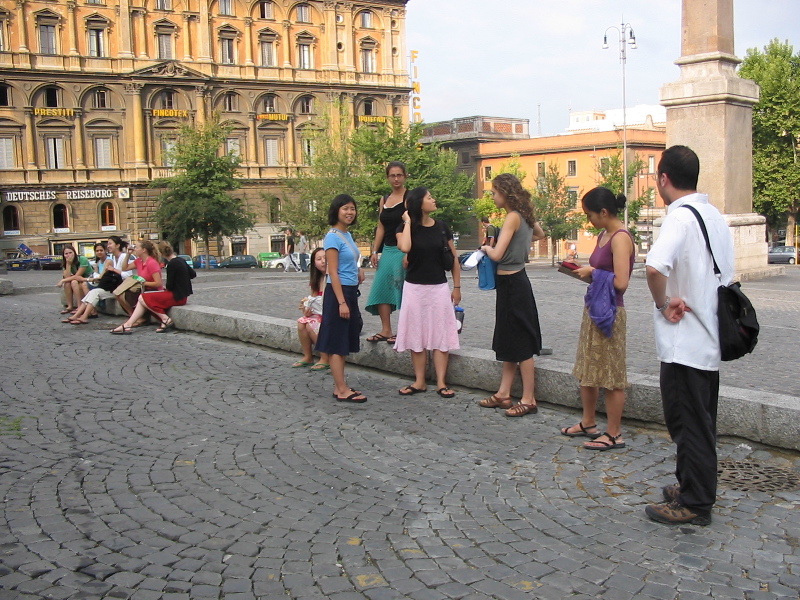
|
| by Patricia Voll |
| The Students Gather |
| Sleepy students at the back of S. Maria Maggiore wonder, where is everyone else? Lisa soon found us and directed us to the front. |
| |
|
| |
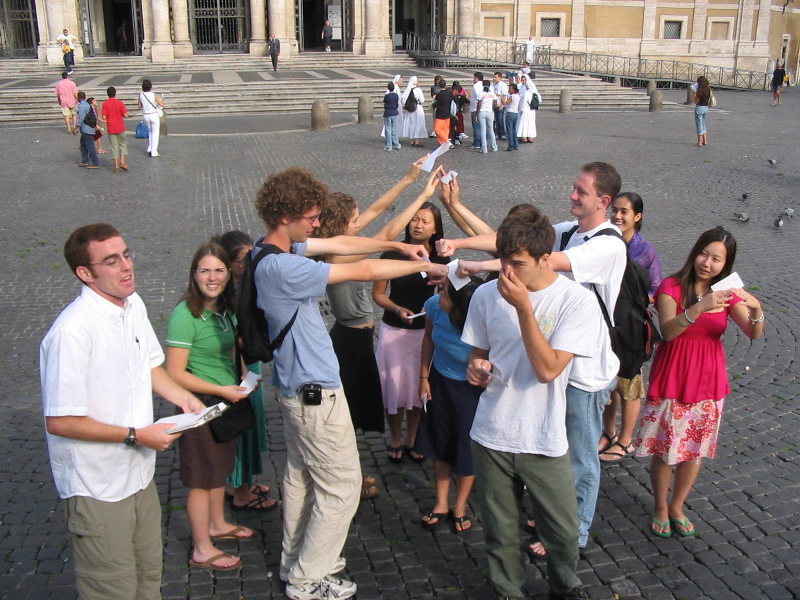
|
| by Patricia Voll |
| The Human Basilica |
| Davie instructs his volunteers as they form the human basilica |
| |
|
| |
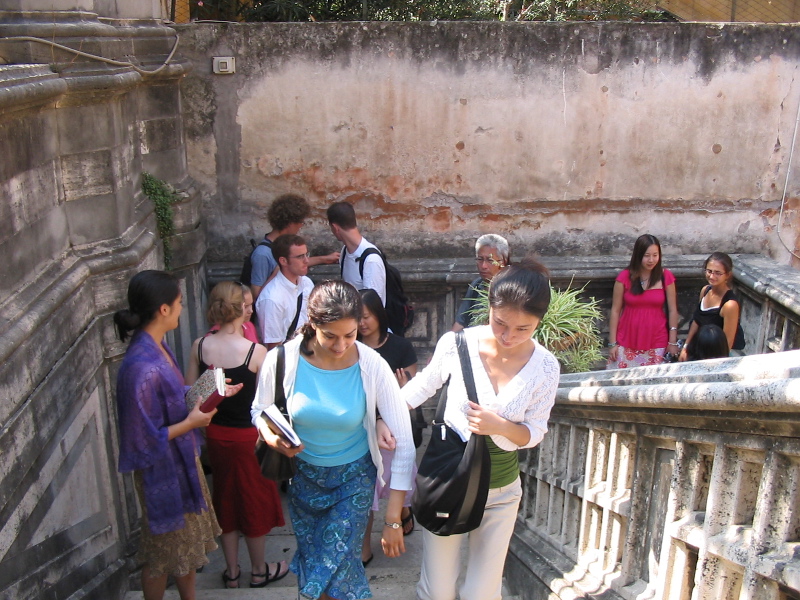
|
| by Patricia Voll |
| The Steps Down to Santa Pudenziana |
| The church is so old that it is at a lower level than the newer parts of the city. Here students climb up the steps as we leave. |
| |
|
Mornings are always slow and sleepy in our apartment on Via di Mantellate. We live across the street from the local jail, whose tall and silent walls keep our street quiet and shady. Today, however, we left nice and early to catch a bus to Termini, walk to Santa Maria Maggiore, and grab a cappuccino and a coffee at a local bar before 9:00. Students drifted in gradually, waking up as the sun started to heat up the day. The first class activity was Davie’s animated short presentation on Santa Maria Maggiore. As part of his presentation he had a group of students pose in the shape of the basilica and read cards about the different parts of the church. The activity woke everyone up and got us started on a full day of learning about the early Christian Church.
Next, Leah gave her interesting presentation on the history, form, and function of the Christian basilica. She started with a demonstration of the proportions of the human body and explained that the basilica was designed to have a similar kind of proportionate symmetry. Originally used as a public court of law for the Romans, the Christians adopted the form of the basilica to their purposes as a growing religion. Inside Santa Maria Maggiore Leah explained the different parts of the basilica and how they all worked together to draw the viewer to the alter. A small service in a side chapel provided fitting music as we wandered around the richly decorated basilica after the presentation.
We finished off our morning with visits to the churches of Santa Prassede and Santa Pudenziana, both just a short distance from S. Maria Maggiore. Prassede and Pudenziana were sisters who were converted by St. Peter while he was staying in their father’s house. Santa Prassede was built above the house where Prassede hid persecuted Christians. A design on the floor makes the location of a well where she hid martyrs’ remains. The Chapel of St. Zeno on the right side contains beautiful 9th century mosaics and a broken column against which Christ was scourged. In this church Nicole presented on the fascinating subject of relics. We learned that there were three levels of relics, the most important being the remains of a saint, followed by possessions of saints and objects that have touched a saint’s relics. Santa Pudenziana was built on the house of Pudens, the father of the two saints. The apse mosaic dates from 390 A.D. and is the earliest of its kind in Rome.
After class the group dispersed to explore, work on homework, and prepare food for tonight’s potluck at Lisa’s apartment in Palazzo Pio. The potluck featured grilled chicken, sausages, and vegetables provided by Lisa and fresh, homemade pizza bianca by Peter, Davie, and Joe. It also included two delectable salads from the girls in the large Campo apartment, a garlic and onion pasta dish made by me, and great baked desserts brought by Justin, Joel, Angela, and Kayanna. All of the food was delicious and a great time was had by all.
|
| |
|
| |
|
| |
Highlights |
| |
The highlight of the day for me was getting to cook and eat together as a group. Good food is always better with good company, and preparing food for friends is always a joy. The smells of food cooking, the sounds of laughter and voices, and the view of the Campo at night all made this a beautiful evening.
|
| |
|
| |
|
| |
Images |
| |
| |
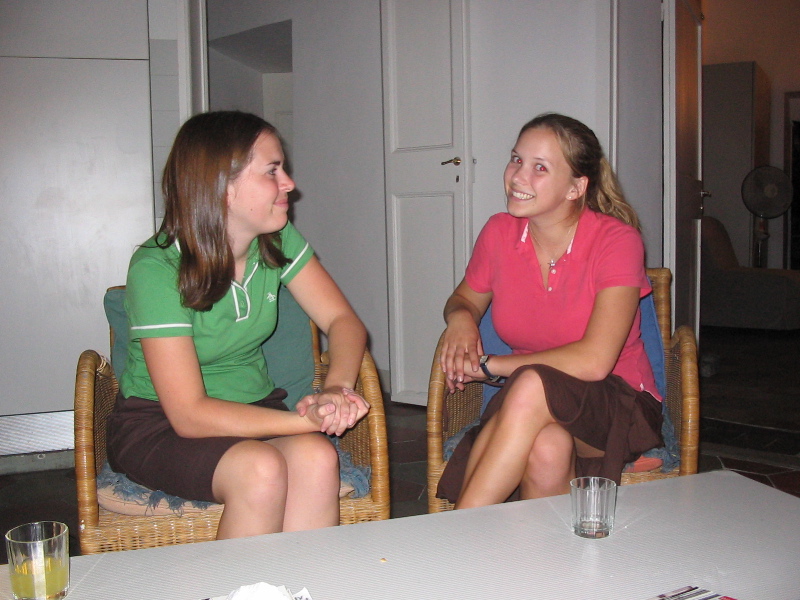
|
| by Patricia Voll |
| Waiting to Eat |
| Nina and Julie talk about their day as they wait for dinner |
| |
|
| |
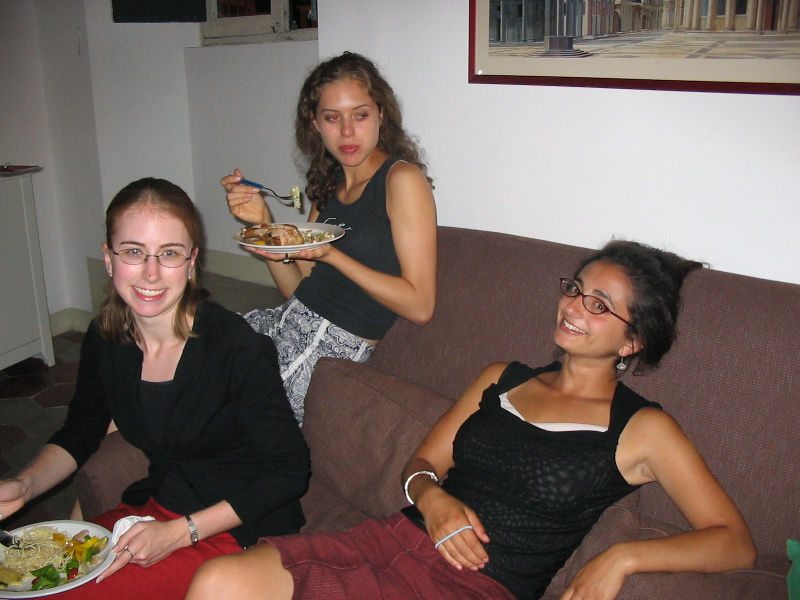
|
| by Patricia Voll |
| Potluck Dinner |
| Nicole, Leah, and Kayanna enjoying the food |
| |
|
|
| |
|
| |
|
|
 |
|





